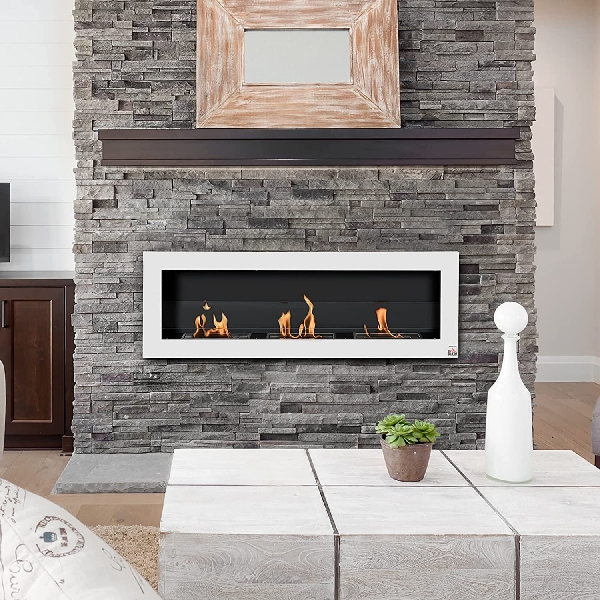Do you ever find yourself caught up in a fad, and never think to wonder how it started? This seems to be what happened with bio ethanol fireplaces.
People were told that they could have a synthetic fire inside their homes, with no harmful by-products, and they all hurried out to buy one. However, bio ethanol fireplaces do not work magically by themselves. They require a particular type of fuel in order to operate. This type of fuel is called bio ethanol.
WHAT IS BIO ETHANOL?
Bioethanol or cellulosic ethanol fuel is a renewable source of energy. It is used as a substitute for gasoline for transport vehicles. This liquid is clear and colorless. It is popular because of its low impact on the environment, even if a large quantity of it is accidentally spilled unlike fossil fuel energy. Bioethanol fuel produce carbon dioxide and water when it is burned. Therefore this is what is produced when you run your ethanol fireplace.

WHAT IS BIO ETHANOL MADE OUT OF?
Bio ethanol is made from the fermentation of sugar crops. This comes from fuel crops such as maize, corn, wheat, and willow, among others. As an alternative, bio ethanol can be made from reacting certain substances. In this case, reacting ethylene and steam will produce ethanol fuel.
WHY USE BIO ETHANOL?
Seeing as bio ethanol is made from crops instead of non-renewable resources, it can be made over and over again. There is no danger of running out of the ingredients to make bio ethanol, which helps the Earth maintain its supply of natural resources.
As well, bio ethanol does not emit any greenhouse gas emissions when it is combusted. Having a type of fuel that does not increase the progression of global warming can only be considered a good thing. This is one of the many great ways to make your home greener.

THE COST OF BIO ETHANOL
The price of bio ethanol fuel is generally kept fairly low to the public. This is because the government wants to encourage the use of sustainable fuel. If the price is kept low enough, people might be more encouraged to switch over to an ethanol fireplace instead of a traditional one.
On average, people who own petroleum-derived ethanol fireplace spend about one dollar per hour to run it. This is less than what a natural gas fireplace would cost, by a large margin. Of course, the total cost of an ethanol fireplace depends on how often you use it, and for how long.
BIO ETHANOL FIREPLACES REALLY SEEM TO BE THE WAY OF THE FUTURE.
They are cheap, safe, and do not pollute the environment. They do require fuel to run, but the use of bio ethanol definitely has more advantages than disadvantages.
Seeing as the fuel is made from mostly natural ingredients, most people will feel safe at the thought of using it. Bio ethanol has been shown to provide enough energy to power large vehicles. This means that it will surely be able to power your ethanol fireplace, and keep you and your family warm when it is cold outside.

